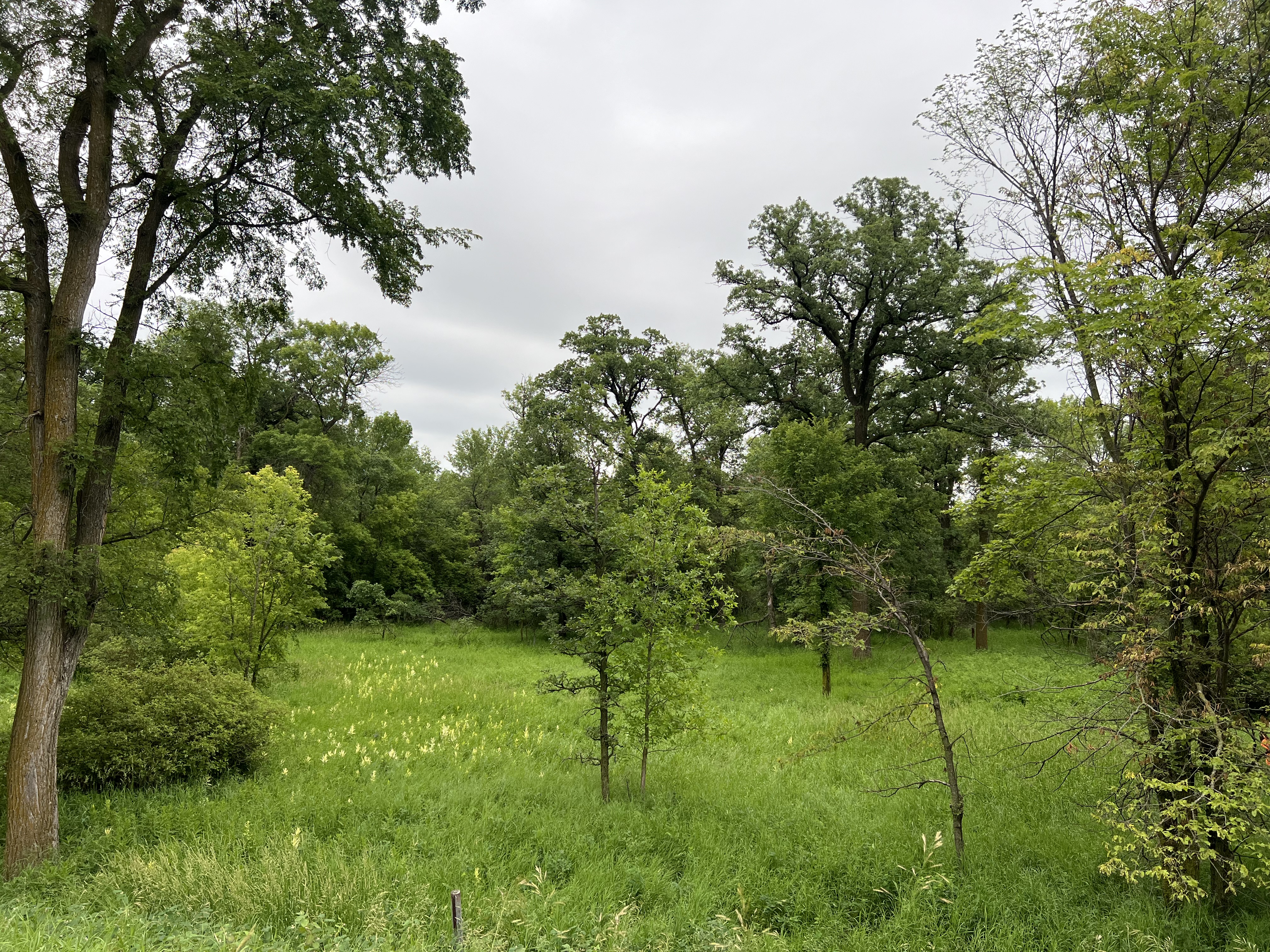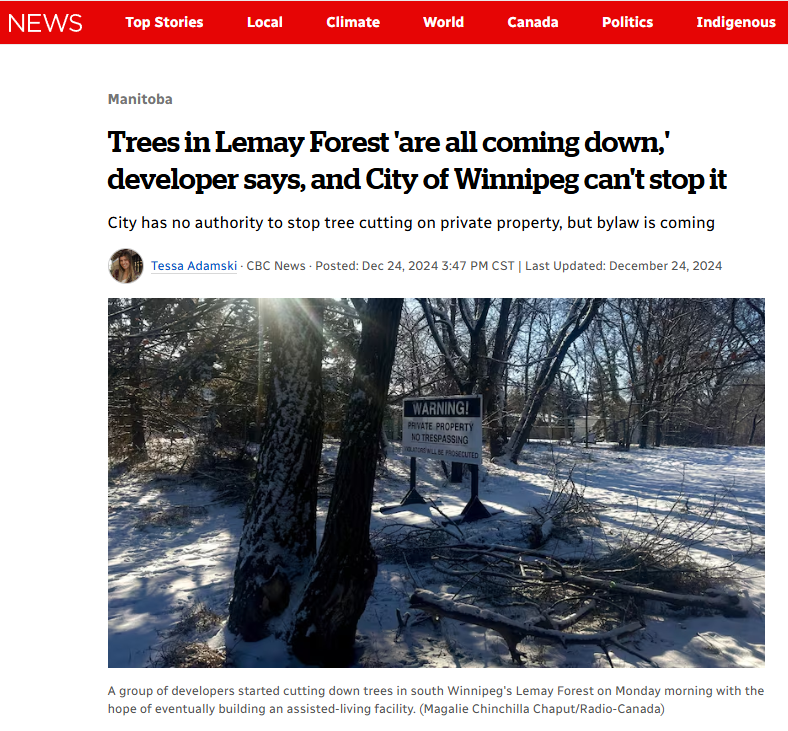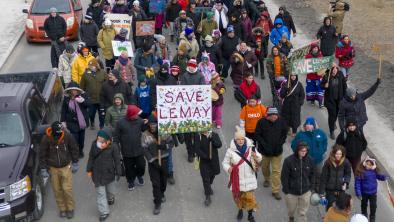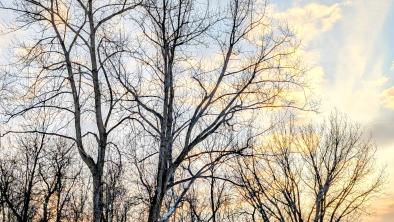Leaning into the Lemay Forest fight

Big trees in Lemay Forest should be part of nature in our neighborhoods
What has long been a revered neighbourhood woodland visited to reflect and recharge is now the setting for multiple conflicts as folks care for their community by defending the Lemay Forest. Woodpecker protection under federal law and cemetery protection under provincial law are both helping keep trees standing, but the owner and developer are adamantly pushing to destroy this ecological gem. Four levels of government are needed to bring a positive end to the strife.
Looking at the grand trees looming over the Lemay Forest it's easy to understand why these woods are special. You can’t simply plant trees to get what this forest gives. It takes a century or so of caring for nature to create a place like this. Deep shade and aged groundcover, a sheltered microclimate, the chance for species to grow and thrive…big tree forests give us a chance to experience awe and wonderment. That's why there is massive public support to label the Lemay Forest a heritage site and give it the public care it deserves.
A land speculator purchased the forest parcel now known as the Lemay Forest in 2017, and has floated some ideas for developing it. The 22-acre property has no services like electricity, sewer, water or road access. It’s not very far from the ground water table, further complicating development. What it does have is big trees, valuable nature, spiritual importance as the site of ongoing Indigenous ceremony and a past as the site of an abandoned Catholic cemetery.
The prevalence of pileated woodpeckers in this forest has long been talked about but it wasn't until January 2025 that an affidavit filed by the developer showed a federal species protection law wasn't being followed. Under the Migratory Birds Convention Act, pileated woodpecker cavities must be protected for a minimum of 3 years. Although a federal wildlife officer asked that the developer inspect these large trees of the Lemay Forest for pileated woodpecker cavities, the affidavit says nothing about such an inspection happening. The federal government still needs to clarify how the law will be upheld in Manitoba for this prehistoric looking bird.
Culture, ceremony and beliefs for Indigenous communities are grounded in nature, and this woodland has been home to ceremonial sweat lodges for decades. Healing and direction come from the ceremonies that have been conducted here. Any development at all will change this ceremonial space for the Indigenous communities using it.
The hardest information to absorb and sit with is the abandoned Asile Ritchot Cemetery and the documentation indicating unmarked graves in this forest. The Asile Ritchot / Richot Orphanage operated from 1904 to 1948 adjacent to the Lemay Forest, and was also a refuge for unwed mothers. Health conditions at the time, exacerbated by insufficient resources, leave a grim tale. Records publicized in February 2025 state 700 burials occurred here. Records also show 3,300 deaths with no burial site indicated. The presence of this many unaccounted for graves raises the importance of preserving this sacred forest.
Ducks Unlimited reviewed this forest several years ago and called it a high conservation value forest. The Manitoba Habitat Conservancy offered to purchase the land for more than $5 million dollars this year, but the developer stated on CJOB that he didn’t even consider the offer. What should be a public discussion about how we care for hallowed ground and revere nature is instead a legal battle as the developer tries to intimidate those who wish to preserve Lemay Forest. Despite all of the developer’s plans being rejected by the city so far, they started cutting down trees through a vegetation control permit issued by the City of Winnipeg.

If the developer refuses to discuss what is best for the folks of Winnipeg and Manitoba, and instead demands they be allowed to cut down the forest, we have no choice but to ask all levels of government to step in and seize control of this ecologically precious and sacred site.
There is a role for the Assembly of Manitoba Chiefs, the Manitoba Metis Federation, the federal and provincial governments plus the city of Winnipeg to establish an area where we link the intrinsic need to care for nature with the reverence due our ancestors in a way that grows our futures intertwined.
We continue to call on the City of Winnipeg and the Province of Manitoba to designate this a heritage site under existing Municipal and Provincial regulations, so the trees can keep standing and we can build this community space together. You can use our letter writing tool here to voice your opinion to governments.


